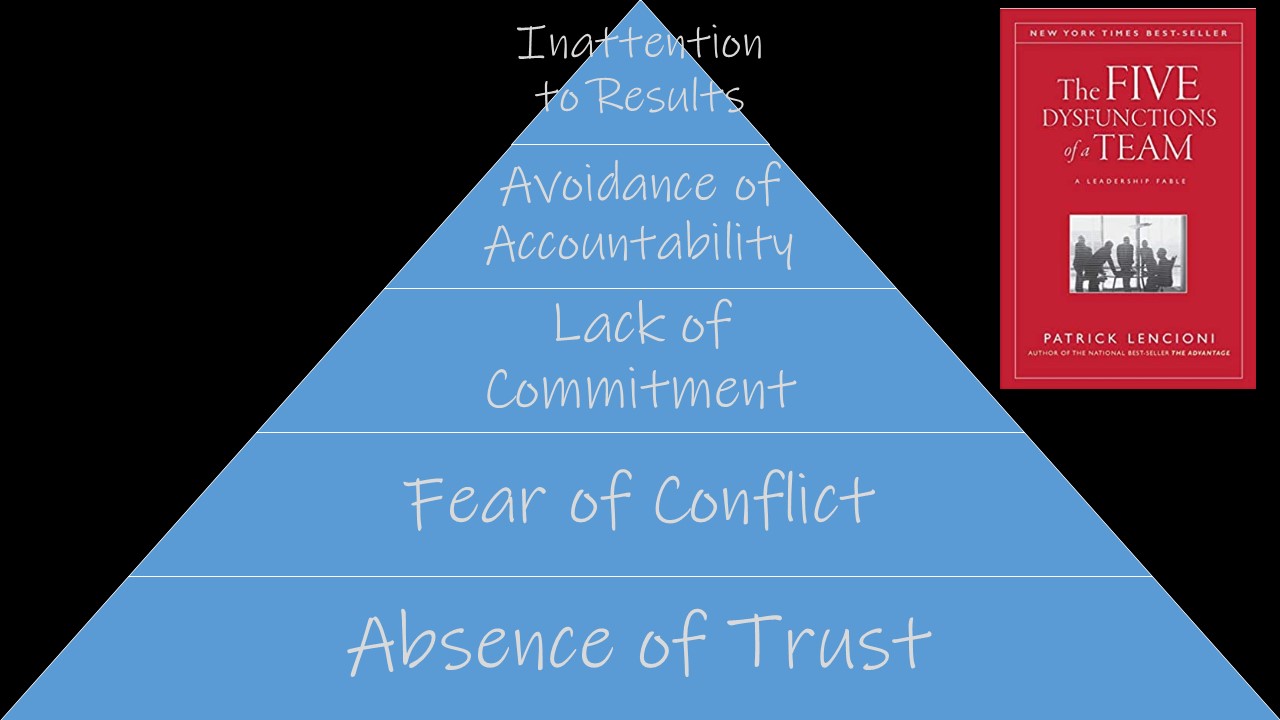

This is a book I read a few years ago, recommended by some co-workers. The author, Patrick Lencioni, is a writer of books on business management and is famous for this book, The Five Dysfunctions of a team. He is also the founder and president of the Table Group, a management consulting firm focused on organizational health.
This book is an easy read, and since it is a fable (fiction) story, you can really place yourself in the scenario and learn from the personalities described. You learn things that you can apply to the groups you have joined during your professional and personal career. Each of these layers has its own issues to work through, but the payoff is a team that is all rowing in the same direction.
Awesome video with an overview of the book – The Five Dysfunctions of a Team
The author, Pat Lencioni, doing a 30 minute talk with more real world examples affiliated with his book, the Five Dysfunctions of a Team
The above pyramid, the model described in the book, explains how one dysfunction leads to another and in the end, results in a negative morale of the team.
#1 Absence of Trust
Bottom of the pyramid is the absence of trust, when team members are unable to show their weakness, resulting in being reluctant to be vulnerable and being open with one another. The result is that Team members will be afraid of admitting their mistakes and won’t ask for help.
#2 Fear of Conflict
Resulting from a lack of trust is a fear of conflict, which in turn results in team members incapable of engaging in debates or openly voicing their opinions. A team that avoids conflicts produce inferior results.
#3 Lack of Commitment
Fear of conflict results in lack of commitment. When team members aren’t bought into the decisions, they aren’t committed, which results in an environment where ambiguity wins the day.
#4 Avoidance of Accountability
Lack of commitment results in team members not holding each other accountable.
#5 Inattention to Results
If the team members aren’t accountable, they put their own needs [ego, recognition, career development etc.] ahead of the team goals. This total loss of focus causes the company / division / team to suffer.
Addressing Dysfunctions
As the first step for addressing these dysfunctions, every team needs to understand that these dysfunctions exist. The leadership in the company needs to lead by example and set the tone for the whole team to overcome these dysfunctions. This means the leadership being the first one to be vulnerable, encouraging debate and conflict, making responsibilities and deadlines clear, setting the team’s standards, and being clear on the team’s outcome. It is important to understand that reaching consensus is not the goal, but making sure that everyone is being heard.
Ask these simple questions to understand the level of dysfunction you are facing:
- Do team members openly and readily disclose their opinions?
- Are team meetings compelling and productive?
- Does the team come to decisions quickly and avoid getting bogged down by consensus?
- Do team members confront one another about their shortcomings?
- Do team members sacrifice their own interests for the good of the team?
No team is perfect, but constantly work to ensure that the answers to the above questions are “yes”.
In that type of environment you can create a culture that will produce the results you desire!.





